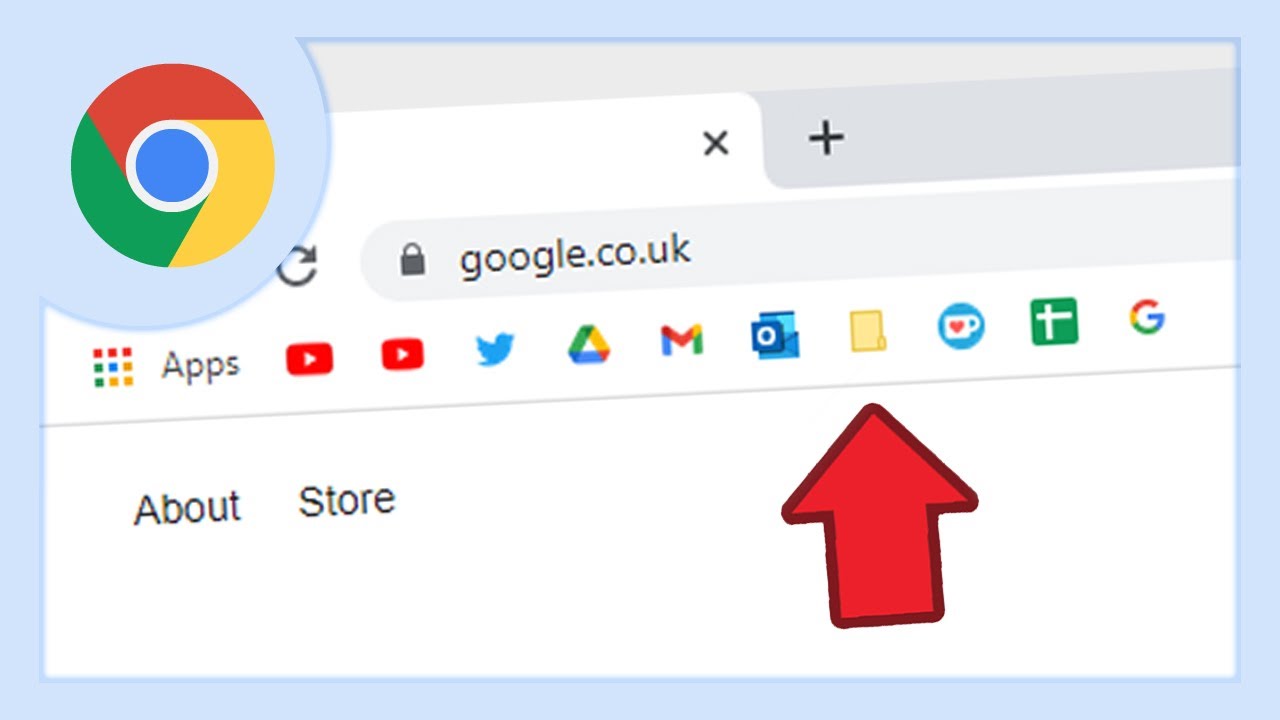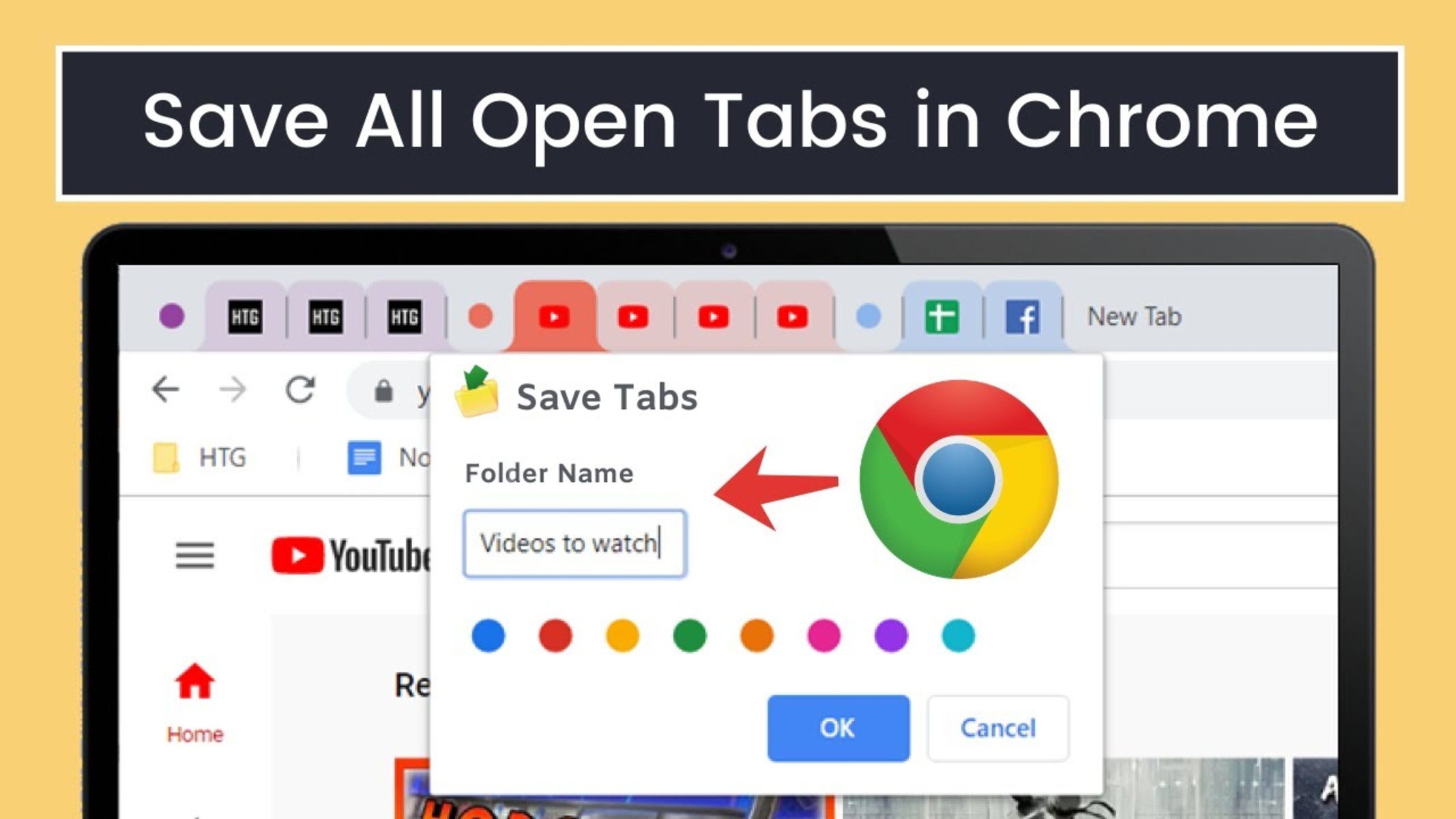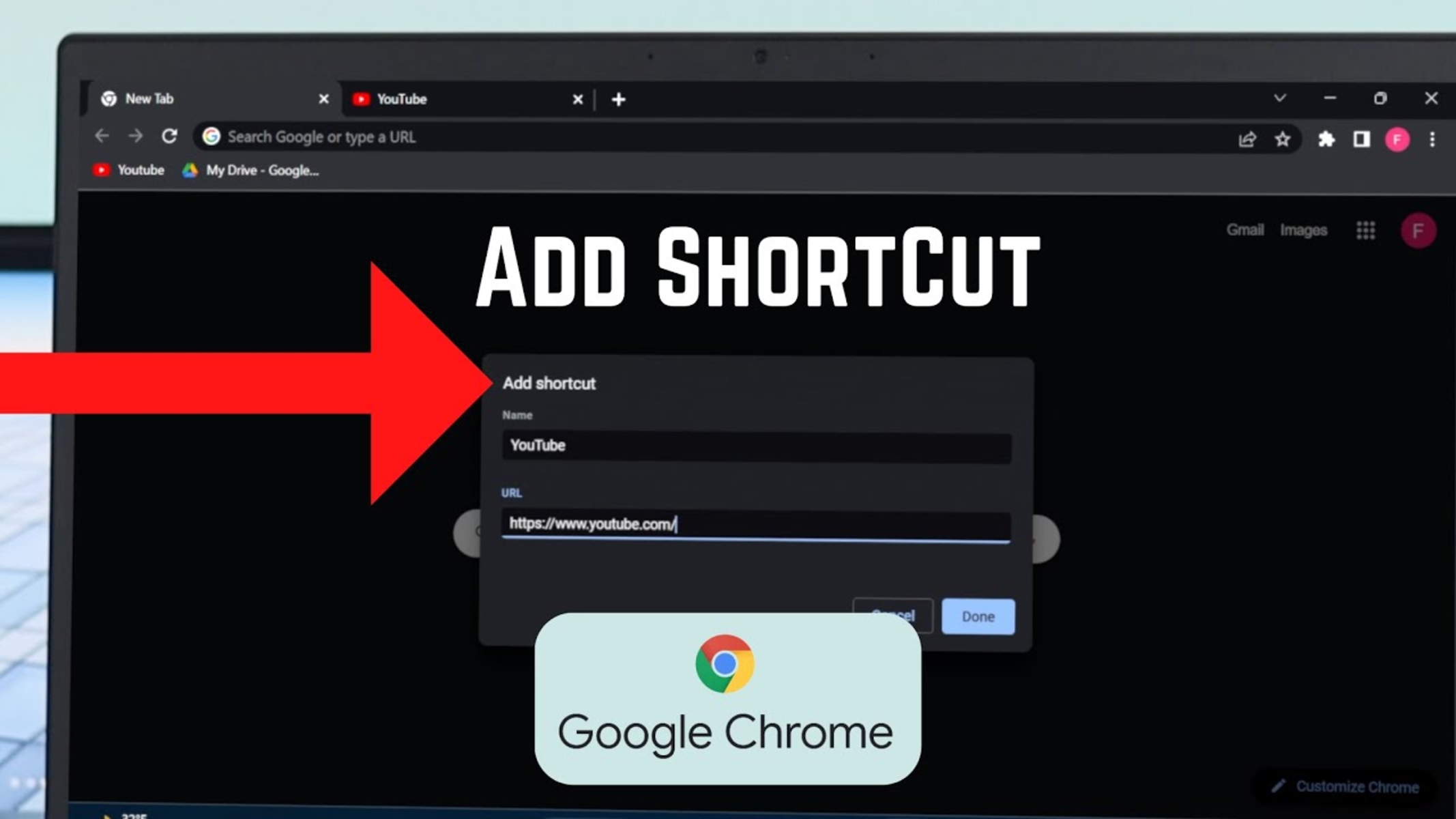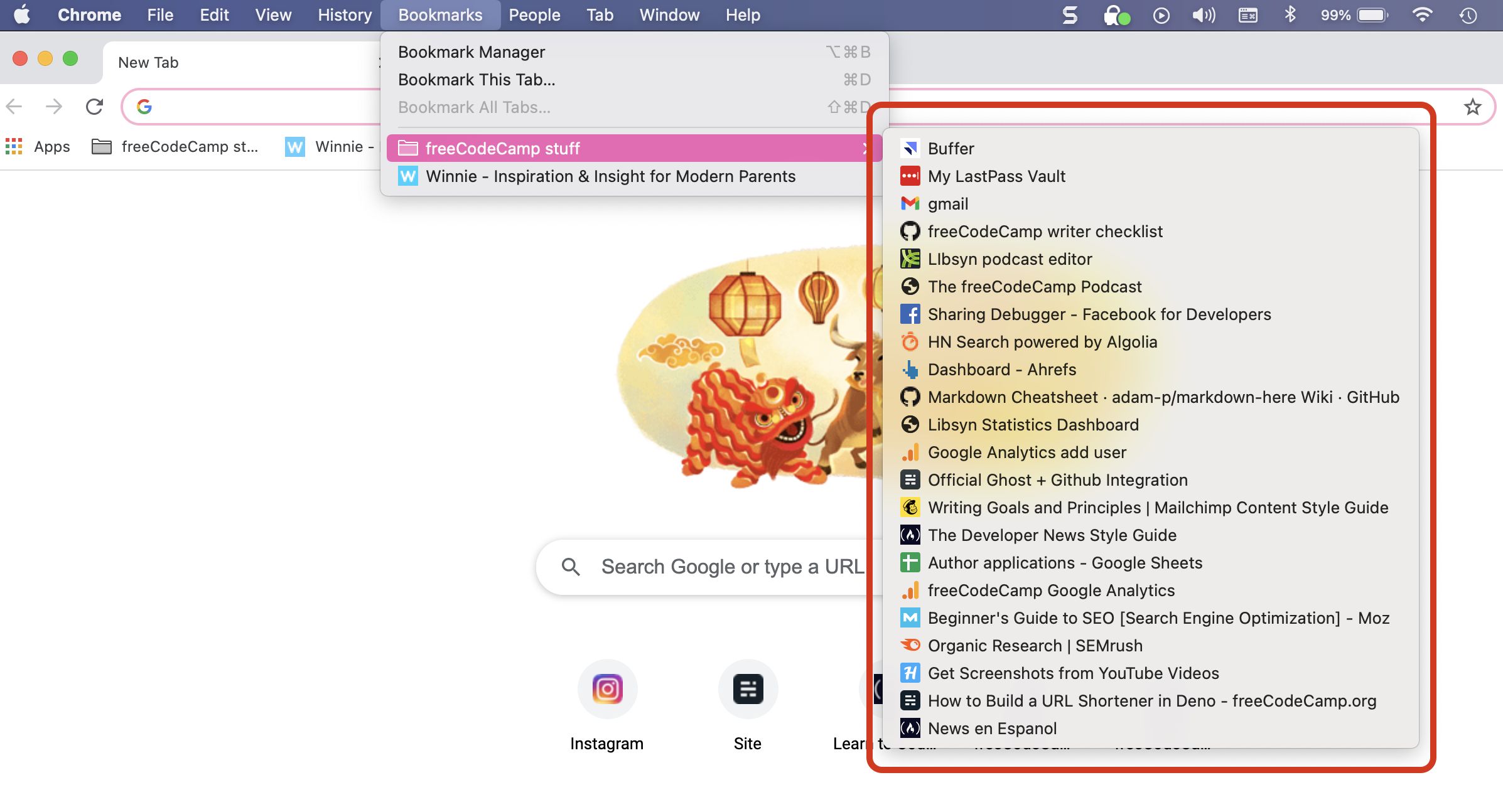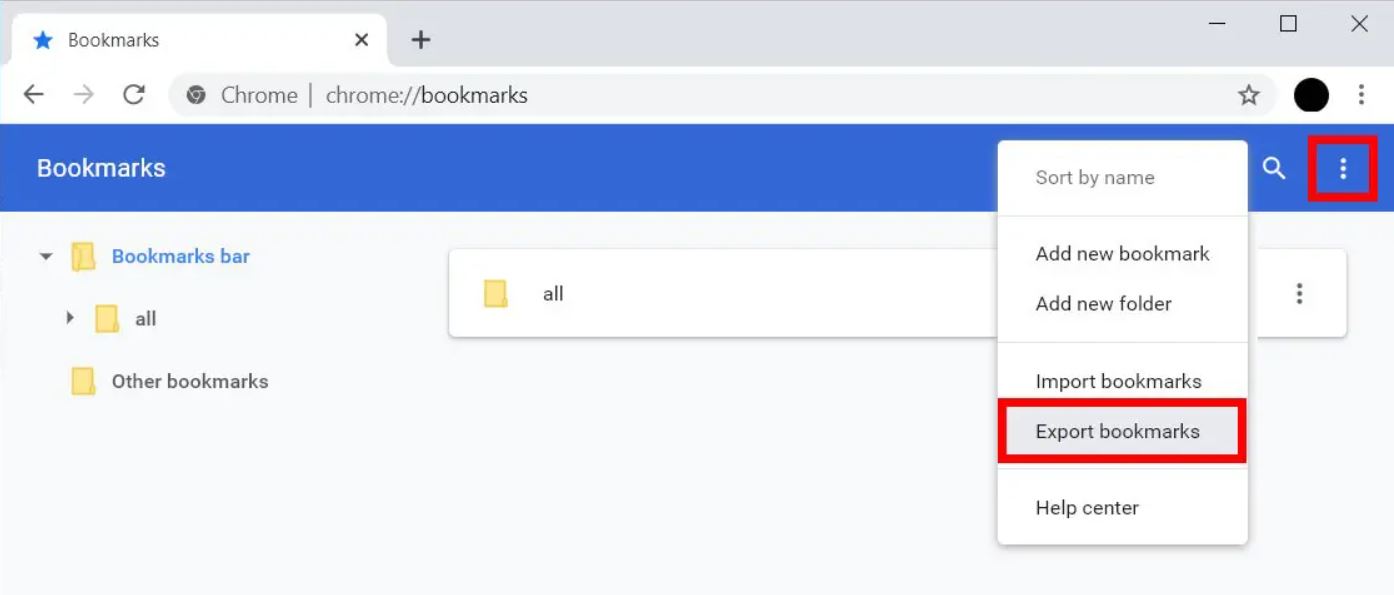Introduction
Managing bookmarks in a web browser is a fundamental aspect of organizing and accessing your favorite websites efficiently. Whether you're an avid reader, a research enthusiast, or a professional navigating through a myriad of online resources, the ability to organize bookmarks effectively can significantly enhance your browsing experience. In this article, we will explore the various methods to organize bookmarks in Google Chrome, one of the most popular web browsers globally.
As the internet continues to expand with an abundance of valuable content, the need to manage and access bookmarks seamlessly becomes increasingly crucial. Google Chrome offers a user-friendly interface and a plethora of features to help users organize their bookmarks with ease. From creating folders to syncing bookmarks across devices, Chrome provides a range of tools to streamline the bookmark organization process.
By understanding the intricacies of bookmark management in Chrome, users can optimize their browsing experience, save time, and maintain a clutter-free bookmark collection. Whether you're a casual internet user or a power browser, mastering the art of organizing bookmarks in Chrome can elevate your productivity and enhance your online journey. Let's delve into the various techniques and features that Chrome offers to help you manage your bookmarks effectively.
Using Bookmarks Bar
The Bookmarks Bar in Google Chrome serves as a convenient and accessible space for storing frequently visited websites and essential links. It appears just below the address bar, allowing users to quickly navigate to their favorite sites with a single click. Leveraging the Bookmarks Bar can significantly streamline the browsing experience, providing instant access to essential web pages without the need to navigate through multiple menus or folders.
To add a website to the Bookmarks Bar, simply visit the desired webpage and click on the star icon located at the right end of the address bar. A dialog box will appear, prompting you to choose the location for the bookmark. Select "Bookmarks bar" from the dropdown menu and click "Done" to save the bookmark. The saved website will now appear as a clickable link on the Bookmarks Bar, easily accessible whenever you open a new tab or window.
Organizing bookmarks on the Bookmarks Bar is intuitive and straightforward. Users can simply drag and drop bookmarks to rearrange them according to their preference. This feature allows for personalized organization, enabling users to prioritize and categorize bookmarks based on their frequency of use or thematic relevance.
Furthermore, the Bookmarks Bar supports the creation of folders, allowing for even more refined organization. By right-clicking on the Bookmarks Bar and selecting "Add folder," users can create a new folder to house related bookmarks. This functionality is particularly useful for grouping similar websites together, such as news portals, social media platforms, or productivity tools.
The Bookmarks Bar also offers the flexibility to show or hide itself based on user preference. By right-clicking on the Bookmarks Bar and selecting "Show bookmarks bar," users can toggle the visibility of the bar, optimizing screen real estate based on their browsing habits and workflow.
In essence, the Bookmarks Bar in Google Chrome serves as a dynamic and customizable tool for quick and efficient access to frequently visited websites. By leveraging its features, users can streamline their browsing experience, enhance productivity, and maintain easy access to their favorite online destinations.
Creating Folders
In Google Chrome, creating folders within the bookmarks serves as a pivotal strategy for organizing and categorizing saved web pages. By grouping related bookmarks into folders, users can maintain a structured and easily navigable collection, thereby enhancing their browsing efficiency and overall experience.
To create a folder in Chrome, users can follow a simple and intuitive process. Firstly, they need to navigate to the Bookmarks Bar or the Bookmarks Manager, depending on their preference for the location of the new folder. Once in the desired location, users can right-click and select the "Add folder" option. This action prompts the creation of a new folder, allowing users to assign a name that reflects the theme or category of the bookmarks it will contain.
The ability to create folders within the Bookmarks Bar offers a streamlined approach to organizing frequently accessed websites. For instance, users can create folders for specific interests or activities, such as "News," "Entertainment," "Work," or "Shopping." This categorization enables users to quickly locate and access bookmarks based on their relevance to the current browsing context.
Similarly, within the Bookmarks Manager, users can create nested folders, allowing for a hierarchical organization of bookmarks. This feature is particularly beneficial for users with extensive bookmark collections, as it enables them to create subcategories within broader themes. For example, within the "Work" folder, users can create subfolders for different projects, clients, or resources, ensuring a granular and structured approach to bookmark organization.
Furthermore, the process of adding bookmarks to folders is seamless and adaptable. When saving a new bookmark, users can choose the desired folder as the location for the bookmark, ensuring that it is neatly placed within the relevant category. Additionally, users can easily move existing bookmarks into folders by dragging and dropping them, facilitating effortless reorganization and maintenance of their bookmark collection.
By creating folders within Google Chrome's bookmark system, users can personalize their browsing experience, streamline access to their favorite websites, and maintain a well-organized collection of online resources. This approach not only enhances efficiency but also contributes to a clutter-free and tailored browsing environment, reflecting the individual preferences and interests of the user.
Managing Bookmarks
Managing bookmarks in Google Chrome encompasses a range of functionalities that empower users to maintain a well-organized and easily accessible collection of saved web pages. Beyond the initial process of saving bookmarks, Chrome offers several tools and features to facilitate efficient management and maintenance of these saved links.
One of the key aspects of managing bookmarks in Chrome is the ability to edit and update existing bookmarks. This includes modifying the name of the bookmark to ensure clarity and relevance, as well as adjusting the URL if the webpage's address has changed. By right-clicking on a bookmark and selecting the "Edit" option, users can effortlessly update the bookmark's details, ensuring that it remains current and accurate.
Furthermore, Chrome provides a seamless method for removing unwanted or obsolete bookmarks. By right-clicking on a bookmark and selecting the "Delete" option, users can efficiently declutter their bookmark collection, removing links that are no longer relevant or in use. This process helps maintain a streamlined and purposeful collection, ensuring that only essential and meaningful bookmarks are retained.
In addition to individual bookmark management, Chrome offers a comprehensive Bookmarks Manager, accessible through the browser's settings or via the "Bookmark Manager" option in the Bookmarks Bar. The Bookmarks Manager provides a centralized view of all saved bookmarks, allowing users to organize, edit, and delete bookmarks efficiently. It also offers a search functionality, enabling users to quickly locate specific bookmarks based on keywords or website titles.
Chrome's Bookmarks Manager further enhances the bookmark management experience by allowing users to reorganize their bookmarks through simple drag-and-drop actions. This feature enables users to rearrange bookmarks within folders or move them to different folders, fostering a personalized and adaptable approach to bookmark organization.
Moreover, Chrome's bookmark management extends to the synchronization of bookmarks across devices for users signed in with their Google account. This seamless synchronization ensures that bookmarks saved on one device are accessible on all other devices where the user is signed in to Chrome, promoting a cohesive and unified browsing experience across multiple platforms.
In essence, managing bookmarks in Google Chrome encompasses a suite of features designed to streamline the organization, maintenance, and accessibility of saved web pages. By leveraging these tools, users can curate a purposeful and well-structured collection of bookmarks, tailored to their browsing habits and preferences. This approach not only enhances efficiency but also contributes to a personalized and seamless browsing experience within the Chrome ecosystem.
Syncing Bookmarks across Devices
Synchronizing bookmarks across devices is a pivotal feature offered by Google Chrome, enabling users to seamlessly access their saved bookmarks across various platforms and devices. This functionality, facilitated through the user's Google account, ensures that bookmarks saved on one device, such as a laptop or desktop computer, are readily available on other devices, including smartphones and tablets, where the user is signed in to Chrome.
The process of syncing bookmarks across devices begins with signing in to Google Chrome using the same Google account across all devices. Once signed in, Chrome automatically syncs the user's bookmarks, ensuring that any changes or additions made to the bookmark collection on one device are reflected across all other signed-in devices. This synchronization extends to the Bookmarks Bar, folders, and individual bookmarks, creating a cohesive and unified browsing experience.
The seamless nature of bookmark synchronization in Chrome enhances user convenience and accessibility. Whether transitioning from a desktop computer to a mobile device or vice versa, users can rely on the consistent availability of their saved bookmarks, eliminating the need to manually recreate or transfer bookmark collections across devices.
Furthermore, the synchronization of bookmarks aligns with Chrome's broader goal of providing a harmonized browsing experience. By unifying the bookmark collection across devices, Chrome empowers users to seamlessly continue their browsing sessions, access saved resources, and maintain a consistent digital environment regardless of the device they are using.
In addition to bookmarks, Chrome's synchronization encompasses other browsing data, including history, passwords, and settings, further enhancing the continuity and coherence of the user's browsing experience. This holistic approach to synchronization reflects Chrome's commitment to facilitating a seamless and integrated browsing ecosystem for its users.
Overall, the ability to sync bookmarks across devices in Google Chrome represents a significant convenience and productivity enhancement for users. By leveraging this feature, users can maintain a unified and accessible collection of bookmarks, ensuring that their favorite websites and resources are readily available across all their devices, thereby streamlining their browsing experience and promoting a cohesive digital environment.
Conclusion
In conclusion, the effective organization of bookmarks in Google Chrome is essential for streamlining the browsing experience and maximizing productivity. By leveraging the built-in features and functionalities of Chrome, users can curate a well-structured and easily accessible collection of saved web pages, tailored to their individual preferences and browsing habits.
The utilization of the Bookmarks Bar serves as a dynamic tool for quick access to frequently visited websites, allowing users to personalize their browsing environment and prioritize essential links. Creating folders within the bookmarks further enhances organization, enabling users to categorize and group related bookmarks, fostering a clutter-free and navigable collection.
Furthermore, the robust bookmark management capabilities offered by Chrome empower users to edit, delete, and reorganize bookmarks with ease, ensuring that their collection remains relevant and purposeful. The centralized Bookmarks Manager provides a comprehensive view of saved bookmarks, facilitating efficient organization and maintenance.
The seamless synchronization of bookmarks across devices, facilitated through the user's Google account, ensures a cohesive and unified browsing experience, allowing users to access their saved bookmarks across various platforms effortlessly.
By mastering the art of organizing bookmarks in Google Chrome, users can optimize their browsing efficiency, save time, and maintain a tailored and personalized collection of online resources. Whether for professional endeavors, academic research, or leisurely exploration, the ability to manage bookmarks effectively contributes to a seamless and enjoyable browsing experience within the Chrome ecosystem.
In essence, the process of organizing bookmarks in Google Chrome is not merely a functional task but a means of personalizing and enhancing the digital journey. By embracing the diverse features and capabilities offered by Chrome, users can create a purposeful and well-structured bookmark collection, reflecting their unique interests and preferences. Ultimately, the art of bookmark organization in Chrome empowers users to navigate the vast expanse of the internet with ease, efficiency, and a touch of personalization.









